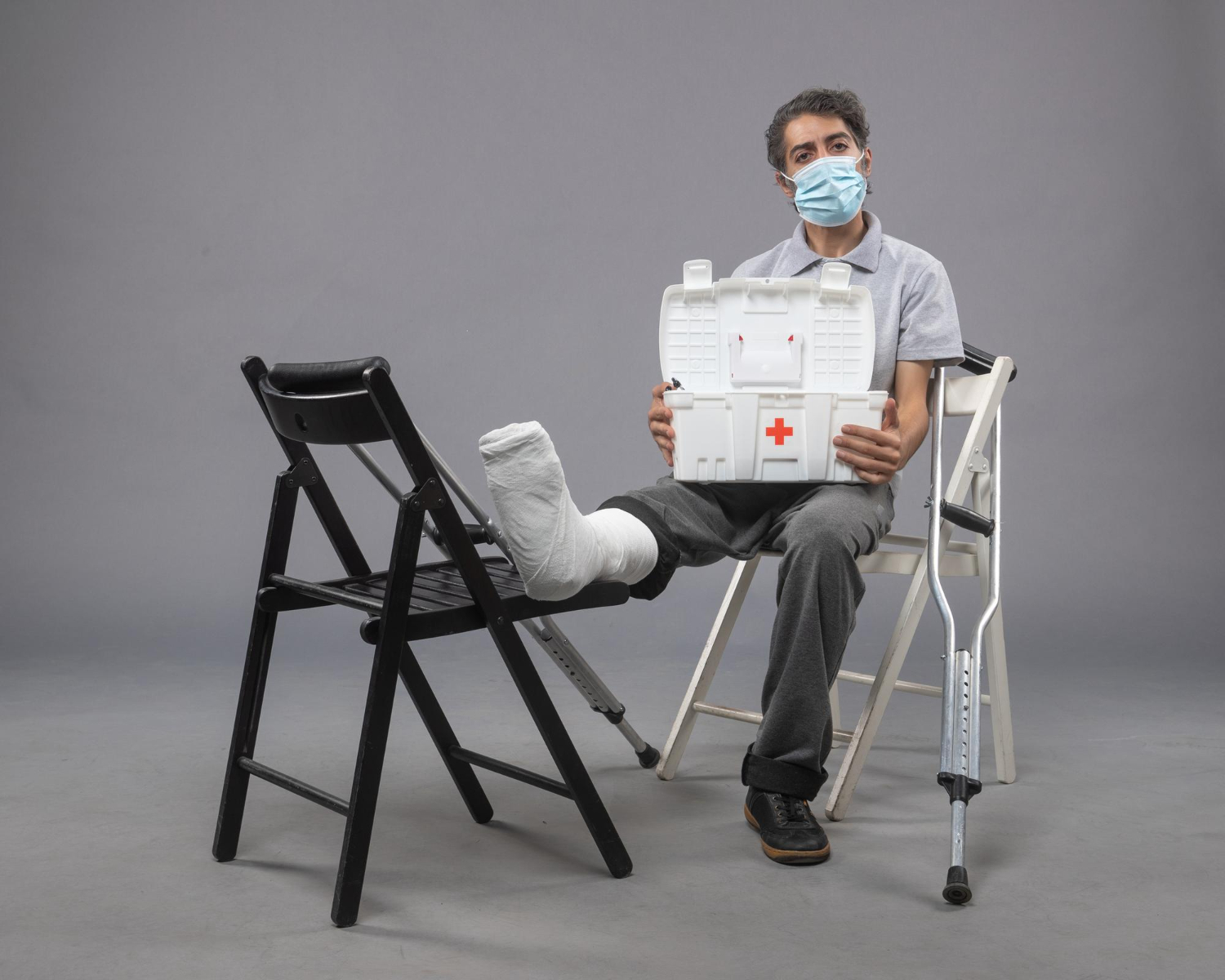Ankle sprains suffered at workplaces can be categorized into three broad categories — inversion ankle sprains, eversion ankle sprains, and high ankle sprains. Let’s take a deeper look into each of these and find out how they can commonly occur.
Inversion Ankle Sprain
An inversion ankle sprain is an ankle sprain that occurs when the foot turns inward, leading the ankle to roll outward. This motion can stretch or tear the ligaments on the outer side of the ankle. Inversion ankle sprains are considered to be the most common type of ankle sprain. An inversion ankle sprain typically occurs when there is an unexpected or forceful inward twisting of the foot, often during activities such as:- Stepping on an uneven surface
- Landing awkwardly from a place of height
- Suddenly changing direction during workplace activities
- Planting the foot awkwardly while moving quickly
- Pain
- Swelling
- Bruising
- Difficulty bearing weight on the affected foot
Eversion Ankle Sprain
An eversion ankle sprain is a less common type of ankle sprain compared to inversion sprains. This type of injury occurs at the workplace when the foot turns outward, causing the ankle to roll inward. This motion can stretch or tear the ligaments on the inner side of the ankle. Eversion ankle sprains can happen during activities such as:- Tripping over an object
- Falling and landing awkwardly on the outside of the foot
- Sustaining a direct impact on the inner side of the ankle due to a workplace injury
- Pain
- Swelling
- Bruising
- Difficulty bearing weight on the injured foot
High Ankle Sprain
A high ankle sprain, also known as a syndesmotic ankle sprain, is a specific type of ankle sprain that involves the ligaments right above the ankle joint. Unlike typical ankle sprains that involve the lateral (outer) or medial (inner) ligaments, high ankle sprains affect the syndesmotic ligaments that connect the tibia (shinbone) and fibula (outer lower leg bone). These sprains often result from the external rotation or twisting of the foot and ankle. High ankle sprains can happen during activities such as:- Sudden changes in direction
- Pivoting
- Due to a direct impact on the outer leg
- Swelling
- Pain
- Tenderness above the ankle joint
- Possible pain while rotating the injured foot
- Difficulty bearing weight on the leg with the sprained ankle.






